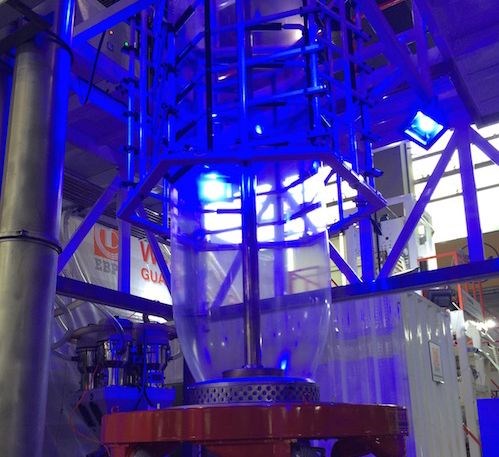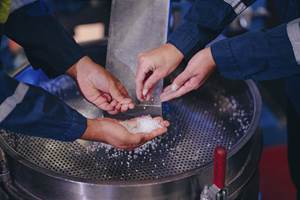PE Prices Moving Up; PP Prices Spike Sharply
An early outlook: the reversal in the trajectory of polyolefin prices is happening faster than usual.
An early outlook: the reversal in the trajectory of polyolefin prices is happening faster than usual.
Around this time last year, I blogged on how global factors like plunging oil prices and larger global resin decreases were impacting polyolefin prices—with a downward trend appearing to be the most prudent and one that actually colored most of 2016. You can say that the start of this year appears to be an ‘about-face’.
Those global factors are still in play—but, now with rising oil prices (though hovering in the low $50/bbl range despite talk of reduced production) and rising prices of global polyolefins and other resins. But other key factors must be accounted for: in the case of PP, those include the significant run-up of propylene monomer prices, as well as tight supply in the case of both PP and PE at the start of the year.
In January 2016, domestic polyolefin prices carried a big premium over the rest of the world. In the case of PP, domestic PP pellets sold at nearly 25ȼ/lb higher than Chinese PP, as noted by Scott Newell, v.p. of PP markets at Resin Technology, Inc. (RTi). In the case of PE, where the concern is not imported pellets but finished film and bags, Chinese imported bags in the first week of that month were going for 75ȼ/lb while domestically produced bags were at 82ȼ/lb, which according to RTi’s v.p. of client services Mike Burns would become an urgent issue were that differential to widen beyond 10ȼ/lb.
By the end of 2016, suppliers of both PE and PP had reduced prices adequately enough to combat imported finished goods in the case of the former and imported resin in the case of the latter. By the end of January, the pricing trajectory was reversed.
• In the case of PE, prices remained flat, but a February 5ȼ/lb price increase is now largely expected to be implemented by this month. RTi’s Burns notes that this is not a demand-driven increase, nor could he cite any solid driving factors behind the increase other than lower supplier inventories. He makes the point that PE suppliers pushed through 10% more exported material than is the norm in December, in their aim to reduce growing inventories. This has resulted in at least a temporaty tightening of the PE market, with off-grade material selling at or above prime resin prices. Burns expected the market to be more balanced within the March-April time frame, noting that many processors were working off inventories in January and would buy only as needed though this month.
Once the market comes more into balance, factors to look at that could bring about further upward pricing are higher oil prices, as well and the strength of the export market, according to Burns. He maintains that direct impact on PE prices is not likely to materialize until oil approaches $60/bbl.
• In the case of PP, prices moved up a whopping 10ȼ/lb last month in step with the late January settlement of propylene monomer, up to 41.5ȼ/lb from December’s 31.5ȼ. If spot monomer prices continue to spike, February monomer contract prices could move up more, with PP following. RTi’s Newell ventures February PP prices could move up 5-8ȼ, but in step with monomer with no margin increases attached, noting, “Resin prices are moving up enough as it is in this very volatile market.”
For now, Newell projects the market becoming more balanced in the late March-April time frame, with prices settling down a bit. Still, he and Michael Greenberg, CEO of Plastics Exchange, The expected PP prices to reach to as high as the low 60ȼ/lb range before the end of first quarter. Both concede that prices in the low 40ȼ/lb range and even below seen in 2016, are unlikely to occur this year. Newell ventures prices will drop but closer to the high-40-to-low-50 ȼ/lb range.

Related Content
Prices Up for PE, PP, PS, Flat for PVC, PET
Trajectory is generally flat-to-down for all commodity resins.
Read MorePrices of All Five Commodity Plastics On the Way Up
Despite earlier anticipated rollover in prices for most of the volume commodity resins, prices were generally on the way up for all going into the third month of first quarter.
Read MorePrices of PE, PP, PS, PVC Drop
Generally, a bottoming-out appears to be the projected pricing trajectory.
Read MorePrices Up for All Volume Resins
First quarter was ending up with upward pricing, primarily due to higher feedstock costs and not supply/demand fundamentals.
Read MoreRead Next
Beyond Prototypes: 8 Ways the Plastics Industry Is Using 3D Printing
Plastics processors are finding applications for 3D printing around the plant and across the supply chain. Here are 8 examples to look for at NPE2024.
Read MoreFor PLASTICS' CEO Seaholm, NPE to Shine Light on Sustainability Successes
With advocacy, communication and sustainability as three main pillars, Seaholm leads a trade association to NPE that ‘is more active today than we have ever been.’
Read More
























